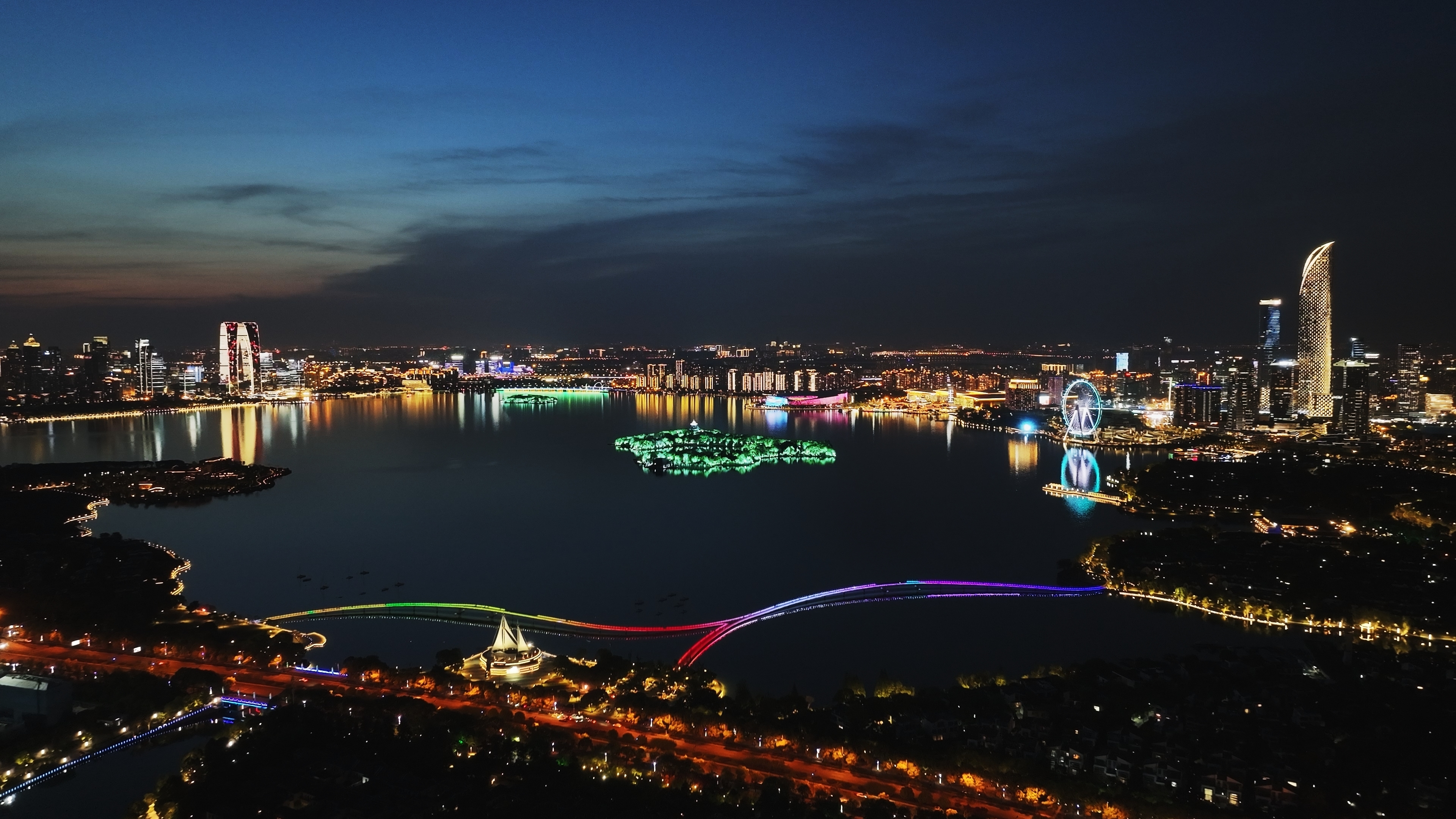Prize(s) Honorable Mentions
Lighting Design/Product Company Brandston Partnership Inc.,
Lead Designers Judy Tang
Other Designer's names Karloz, Dingyi Zhao, Yanru Cao, Tao Qu, Shuli Shao
Client Suzhou Industrial Park Administration for Comprehensive Law Enforcement
Photo Credits Xiaoxiao Sha
Completion Date April 2025
Project Location Suzhou, China
Entry DescriptionBased on a comprehensive view analysis of Jinji Lake, this project introduces the "Dual-Shore Synergy" concept. It artistically deconstructs local cultural elements and reinterprets them through digital coding, creating dynamic 3D simulations in a virtual twin environment. After intricate cross-system integration, the area now achieves seamless interactive experiences. The revitalized Jinji Lake has emerged as a cherished landmark, blending technology with poetic expression.
The digital twin-driven lighting design process unfolds in three refined stages:
Stage 1: Model Construction
Leveraging precise site surveys and geospatial data of Suzhou, a true-to-life 3D urban model is built—laying an accurate computational foundation for creative algorithmic interventions.
Stage 2: Algorithmic Choreography
Drawing inspiration from Suzhou embroidery, a dynamic simulation system interprets and visualizes the movement of abstract cultural motifs, transforming tradition into fluid digital forms.
Stage 3: Aesthetic Synthesis
Guided by simulation outcomes, artistic intent merges with technical execution. Each visual element is refined to achieve thematic coherence—a final harmony where technology elevates aesthetic poetry.
Sustainability ApproachA city's development is incremental. Jinji Lake's modern infrastructure results from 30 years of piecemeal growth, creating varied lighting fixtures, hardware, software, and designs. The renewal project initially considered full replacement but pivoted to a 'catalyst-first' approach. This analyzes key visual corridors, simulates media displays, and implements a unified, time-synced hardware system for low-cost, phased upgrades. It progressively refines the area's nightscape, adjusts landmark brightness via power modulation, and adds an "Energy-Saving Mode" to cut annual energy use.


